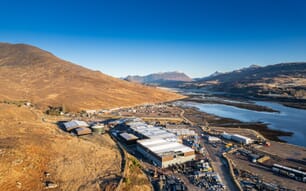The researchers found that the large majority of sea bream (Sparidae) and wrasse (Labridae) fish spawned in MPA study sites in the Mediterranean Sea were transported via currents to other MPAs and unprotected areas, highlighting their interconnected nature.
The Mediterranean Sea is a marine biodiversity hotspot, containing as much as 18 per cent of the world’s known species.
Previous studies have shown that MPAs have a range of positive impacts on marine ecosystems: increasing population densities of fish, boosting average fish size and adding to the overall biomass and biodiversity.
To date, 677 MPAs have been created in the Mediterranean Sea, covering 1.1 per cent of its overall surface, or 4.6 per cent, if the Pelagos Sanctuary for marine mammals is included in the calculation.
This is set to increase, as the Barcelona Convention has set a target to protect 10 per cent of the marine and coastal waters of the Mediterranean by 2020.
However, although MPAs are designated as separate areas of sea they are connected by the marine life they protect.
Coastal fish, for example, can travel large distances — tens or hundreds of kilometres — during their time as eggs and larvae, when they get dispersed by ocean currents.
For the study, the researchers ran a series of simulations using information on oceanic topography of the Strait of Bonifacio, a narrow strip of Mediterranean Sea between Corsica and Sardinia, which contains several different MPAs.
They included information on water currents, egg and larvae size, temperature and season, focusing of two important commercial species, sea bream (Sparidae) and wrasse (Labridae).
Six different scenarios were run for each of the six different spawning months (April to September), resulting in 36 simulations in total.
These were then compared to the results of direct samples taken in August 2012 for accuracy.
Due to the strong currents in the Strait of Bonifacio the large majority of fish eggs and larvae that originated in MPAs in the strait were carried outside these regions, while only around 4 per cent settled in the area that they started in.
One factor that the researchers did not take into consideration in their simulations was the behaviour of the larvae.
Previous research has shown that these very young fish can swim towards a desired location, and therefore are not entirely passively dispersed by ocean currents.
More information is needed on this, the researchers say. The MPAs in the Strait of Bonifacio are key areas for both the supply and settlement of very young fish, and thus play a role in the health of fish stocks.
This evidence of the interconnected nature of these protected areas demonstrates the importance of thinking of MPAs as integrated networks rather than isolated units. The researchers suggest that studies such as this can help planning and management of marine conservation on a seascape scale.

